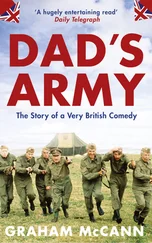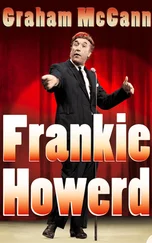At a time when Archie Leach was just beginning to get used to being Cary Grant, the stalwart members of the British colony – after the initial pleasantries were over with – were the most likely people to remind Cary Grant that he was ‘really’ just Archie Leach. Established members of the colony did nothing to disguise their privileged backgrounds: Aubrey Smith (Charterhouse and Cambridge), Basil Rathbone (Repton), Boris Karloff (Uppingham), John Loder (Eton) and Clive Brook (Dulwich) were among those who were known to attend the annual public-school dinner organised by the Hollywood British. David Niven (Stowe and Sandhurst), who arrived in 1934, found it relatively easy to ingratiate himself with this exclusive group, 17 whereas Grant, who struck some of the expatriates as ‘socially insecure’, 18 simply had no choice but to ‘go native’.
He became friends with another Paramount contract player, Randolph Scott, when the two co-starred in Hot Saturday , and they decided to pool their resources and share a house. Handsome, amiable and increasingly successful, the two men began to attract precious publicity as two of Hollywood’s most eligible young bachelors. 19 Scott introduced Grant to Howard Hughes, who, in turn, provided Grant with an entrée into Hollywood’s most glamorous social circles, introducing him to a period of grand and incessant parties, sophisticated and affluent new friends, and all the paraphernalia of California high society. In a sense, Grant found that he could have the best of both worlds: the established British stars were, at least early on, useful contacts, while the rest of the Hollywood community appreciated his unusual sociability. Cary Grant became known as an Englishman who genuinely enjoyed – and felt comfortable in – the company of Americans, and that, in the early thirties, was a rarity which he exploited to the full.
On the movie screen, Cary Grant was still struggling to improve as an actor. Josef von Sternberg had made an ill-conceived attempt to shout him into producing a more assured performance, but the stiffness remained: ‘Joe bemoaned, berated and beseeched me to relax, but it was years before I could move with ease before a camera. Years before I could stop my right eyebrow from lifting, a sure sign of inner defenses and tensions. ’ 20 The majority of the roles he was being given by Paramount simply capitalised on his good looks, putting him into smart uniforms or elegant evening clothes at every opportunity. His success, such as it was, struck him as shallow. Jack Haley Jnr. sympathised: ‘It must have been miserable for Cary. As a foreigner … he was at the bottom of the barrel in terms of parts. The first choice went to Gary Cooper. The second went to George Raft. Even Fred MacMurray was getting better parts than Cary.’ 21 A publicist put it more bluntly: ‘Gary Cooper or Freddie March, they were actors . Cary Grant? He was kind of a stick … He was there to look tall, dark and handsome.’ 22 When he was forced to play Lieutenant Pinkerton in the movie version of Puccini’s Madame Butterfly , and sing ‘My Flower of Japan’ to Sylvia Sidney’s Cio-Cio-San, it seemed that his career, if it was progressing at all, was doing so painfully slowly.
Cary Grant’s fortunes changed suddenly and unexpectedly. Before he had finished shooting Madame Butterfly , he found himself cast in She Done Him Wrong , opposite Mae West. In his autobiography, Fun in a Chinese Laundry , von Sternberg boasted that he had ‘rescued’ Grant from a possible career of being ‘one of Mae West’s foils’ in order to launch him ‘on his stellar career’. 23 The memories of Hollywood celebrities are notoriously unreliable: as the call to work with West came some months after Grant had finished Blonde Venus , von Sternberg’s role in the advancement of Grant’s ‘stellar career’ was somewhat overstated. West claimed in her (equally unreliable) autobiography, Goodness Had Nothing To Do With It , that she noticed ‘a sensational looking young man’ – Grant – on the Paramount lot, and cast him on the spot: ‘If this one can talk,’ she claims she said at the time, ‘I’ll take him.’ 24 According to West, she saw immediately that Grant ‘had poise, a great walk, everything women would like’. 25 In truth, Grant was probably first spotted by West on the screen in one of his earlier movie appearances (‘I liked his voice first, but I saw right away that the rest of him measured up’ 26 ). As far as his casting for She Done Him Wrong was concerned, it seems likely that B. P. Schulberg had favoured pairing his new leading man with the aggressive West, 27 and it is also known that Lowell Sherman, the director West had chosen for the movie, had liked Grant’s performance in Blonde Venus . 28
The movie was an adaptation of West’s stage success of 1928, Diamond Lil . She played Lady Lou, ‘one of the finest women who ever walked the streets’, who runs a Bowery saloon; Grant played Captain Cummings, from the nearby church mission, who is really ‘the Hawk’, a government agent. It was the first opportunity since Grant had been in Hollywood for him to make use of his vaudeville training as a straight man. ‘Haven’t you ever met a man who can make you happy?’ he asks her. ‘Sure,’ she replies, ‘lots of times.’ West had usually played opposite men who appeared as tough and as coarse as her own character, and Grant’s more vulnerable performance provided an interesting contrast to her brash sexuality. ‘Why don’t you come up sometime, see me?’ she says to him, staring into his eyes. ‘Come up. I’ll tell your fortune.’
Shooting began on 21 November 1932, and was completed in a mere eighteen days. For an outlay of $200,000, it earned $2 million within three months in the US alone. This movie, in effect, saved Paramount from bankruptcy. Cary Grant emerged from the triumph as someone who had the potential to be much more than a mere straight man to Mae West. As Pauline Kael observes, West brought out Grant’s passivity, giving him an aloof charm, ‘a quality of refinement in him which made her physical aggression seem a playful gambit’. 29 Kael also noted that the success of the performance was achieved in spite of Grant’s relative lack of confidence in his own abilities as a movie actor: he did not ‘yet know how the camera should see him’, and he appeared, when he had little to do in a scene, ‘vaguely ill at ease’, standing ‘lunged forward as if hoping to catch a ball’ 30 (this might be a little unfair: Grant’s character was meant to seem uneasy in his duplicity, and his physical awkwardness provided West with the opportunity for yet more double entendres : ‘That’s right. Loosen up. Unbend. You’ll feel better’). He was, none the less, the ‘classiest’ leading man whom West had appeared with, and the critics appreciated that fact. ‘Hi, tall, dark and handsome,’ she said to him; it was a nice welcome for Cary Grant. His good looks, under-playing and good comic timing combined to suggest a very promising future. After roles in three more formulaic movies – The Woman Accused, The Eagle and the Hawk and Gambling Ship (all 1933) – Paramount seized on the opportunity to cast Grant alongside West for their second movie together: I’m No Angel . The weak story-line never threatened to distract one’s attention from the comic dialogue:
Grant : Do you mind if I get personal?
West : I don’t mind if you get familiar.
Although it was a poor movie in comparison with She Done Him Wrong , it was another great success at the box-office. Paramount raised his salary to $750 per week. Fan mail began to arrive in increasing amounts, and the fan magazines started to compete for his interviews. 31
Читать дальше












